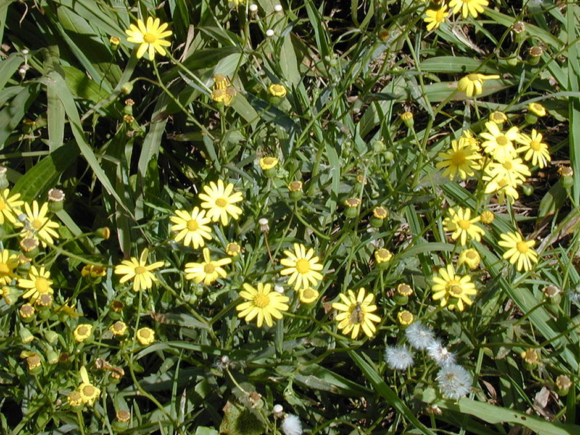26 October 2018 | By Karen Esler (review)
 Revised 4th edition, Published September 2018
Revised 4th edition, Published September 2018
Accessible information about invasive species, alien and indigenous weeds and has never been more critical, as these species increasingly threaten native habitats and agricultural production, and legislation requires that we act to control their impact and spread. Our go-to reference book for southern Africa has always been Clive Bromilow’s Problem Plants and Alien Weeds of South Africa, first published in 1995. The review copy of the latest edition landed on my desk and within one hour, I had needed to consult it three times. I was not disappointed.
First, was to double check a question posed to me about weed control. A clear Table of Contents led me straight to my answer. The introductory chapters of the book provide a useful synopsis of alien species, legislation surrounding them, and an overview of control options. There are useful go-to tables, including lists of invasive species, problematic native species implicated in bush encroachment, biological control agents, herbicides and herbicide-resistant weeds.
Second, was to help a colleague with information on Echium plantagineum, commonly known as Paterson’s Curse. Perceived as beautiful ‘wildflowers’ by some, there is currently conflict in her neighbourhood over their mowing in public open spaces. The accurate and useable index led me straight to the page describing Echium’s origin, and detailing its control. Each of the approximately 800 species in the book is dealt with in the same way, providing useful identification pictures, scientific names (including synonyms where relevant), common names and maps of Southern Africa, broadly outlining distributions.
Third, was to assist a student to identify a handful of pasture grasses. The best feature of the book is the colour-coded pages that allow rapid navigation to growth form types, and from there on, it is a relatively painless exercise to page through the section to locate a species and its details. The identification of the grasses was rapid and painless and should be relatively intuitive for those not botanically trained.
Judging from how well my test-drive questions fared; I know this is going to be a well-used book out of my academic office. Information is intuitively organized and useful, making it massively relevant for managers and the public in general. It’s key to communicate such information, as landowners are potentially liable for the management, control and/or eradication of some of these species that inflict serious harm on our ecosystems. Problem Plants and Alien Weeds of Southern Africa, by Clive Bromilow, is now in its fourth edition (2018), and it really is a must-have for anyone wanting a good overview of these plants and their control.


